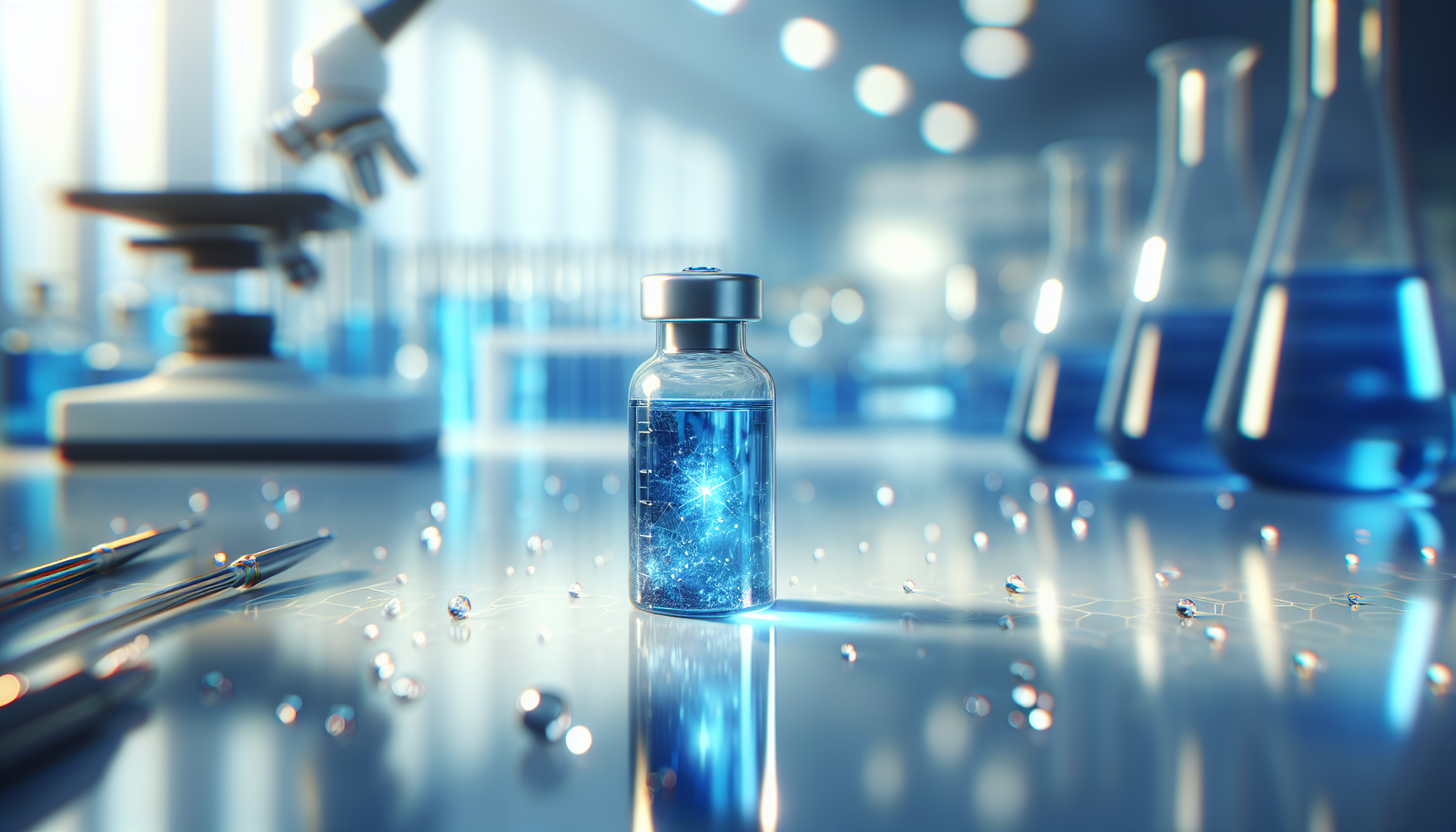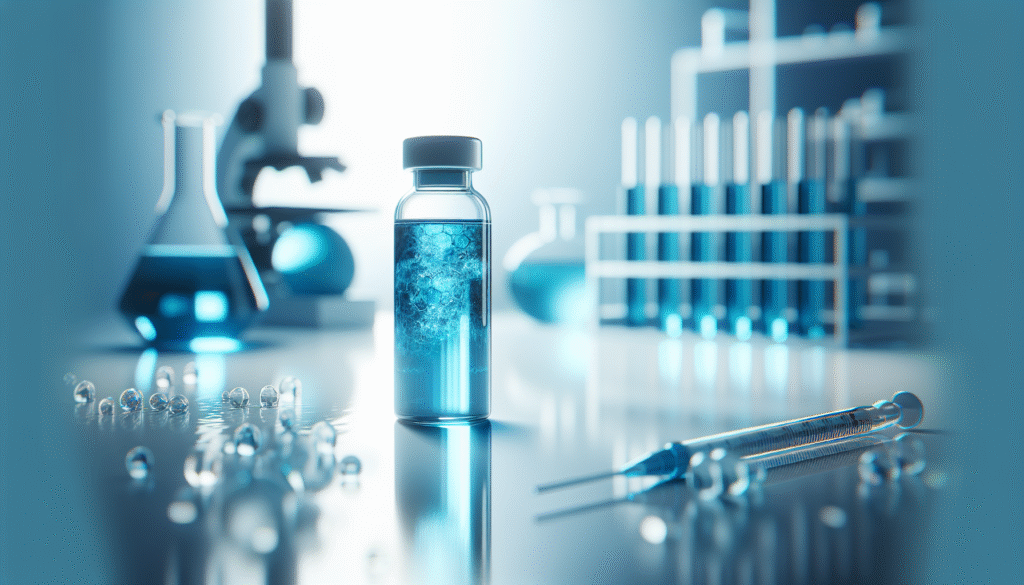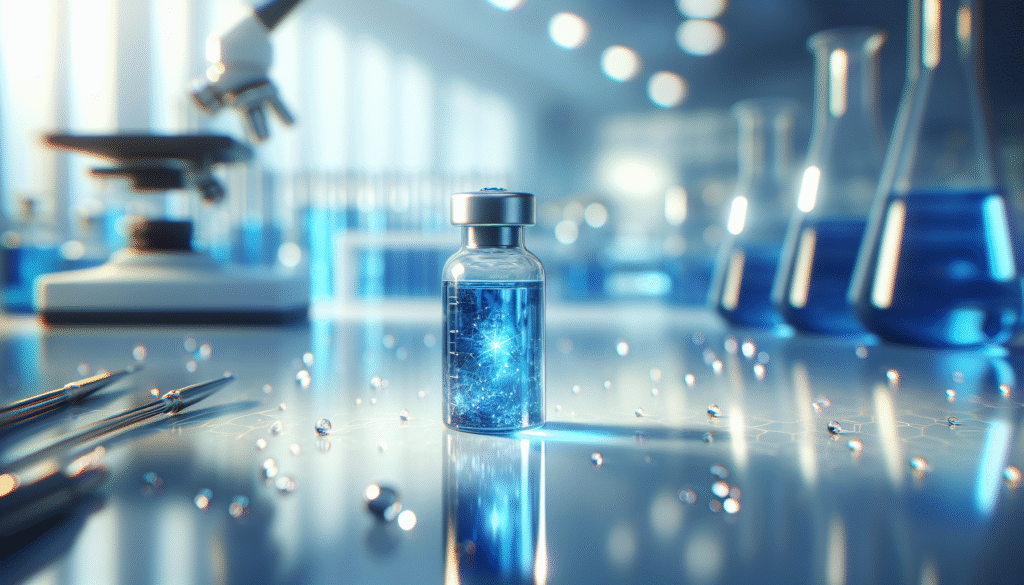
Have you ever considered the implications of using Methylene Blue in your bioassays? This compound, with its intriguing chemical properties and versatile applications, can be a valuable tool in various biological and chemical experiments. Understanding how to utilize Methylene Blue effectively can enhance your research outcomes and offer insights into biological processes.
Understanding Methylene Blue
Methylene Blue is a synthetic dye with a rich history in both medicine and scientific research. Originally developed as a textile dye in the 19th century, it has since found numerous applications in a variety of fields, including microbiology, histology, and pharmacology. Its striking blue color and ability to act as a redox agent make it particularly useful in bioassays.
Chemical Structure and Properties
The chemical formula of Methylene Blue is C16H18ClN3S, and it features a phenothiazine core structure. The presence of nitrogen and sulfur atoms in its structure allows Methylene Blue to participate in various redox reactions. This property is fundamental to its use in biological assays, enabling it to interact with biological molecules in meaningful ways.
The dye is water-soluble, allowing easy preparation of solutions that can be used in various assays. Its stability in different pH environments further enhances its applicability across studies dealing with varied biological specimens.
Biological Significance
Methylene Blue has garnered attention in biological research due to its properties that can affect cellular processes. It acts as an electron donor and can facilitate redox reactions that may be vital for understanding metabolic pathways. Additionally, its capacity to form complexes with different biomolecules allows for deeper insights into cellular structures and functions.
Applications of Methylene Blue in Bioassays
Methylene Blue is remarkably versatile and finds utility in various types of bioassays. Understanding these applications can help refine your experimental design and analysis.
1. Antimicrobial Activity Testing
One of the primary applications of Methylene Blue is in assessing the antimicrobial properties of different compounds. By employing the dye in biological assays, you can evaluate the efficacy of antimicrobial agents against specific strains of bacteria or fungi.
Methodology for Antimicrobial Testing
-
Preparation of Bacterial Culture: Cultivate the microorganism in an appropriate medium. This ensures that you have a viable population for testing.
-
Dilution of Methylene Blue: Prepare a series of dilutions of Methylene Blue in your assay medium. Typically, concentrations ranging from 0.1 µg/mL to 10 µg/mL can be used.
-
Inoculation: Inoculate each dilution with a standardized bacterial inoculum. It is crucial to maintain the same inoculum density across all samples to ensure reliable results.
-
Incubation: Allow the cultures to incubate for a specified period under suitable conditions. After incubation, measure the growth by assessing optical density (OD) or colony-forming units (CFUs).
-
Interpretation of Results: Analyze the data to determine the Minimum Inhibitory Concentration (MIC), which signifies the lowest concentration of Methylene Blue that inhibits microbial growth.
2. Cytotoxicity Assessment
Another significant application of Methylene Blue is in cytotoxicity assays. By determining the effects of various treatments on cell viability, you can gauge potential therapeutic benefits or hazards.
Conducting Cytotoxicity Assays
-
Cell Line Selection: Choose an appropriate cell line based on your research objectives. Commonly used cell lines include HeLa and MCF-7.
-
Treatment Preparation: Prepare the Methylene Blue solutions at varying concentrations to evaluate its effects on cell viability.
-
Cell Treatment: Expose cells to different concentrations of Methylene Blue for a defined time period.
-
Viability Assessment: After treatment, employ assays like the MTT or Trypan Blue exclusion assay to determine cell survival rates.
-
Data Analysis: Plot survival rates against the concentrations of Methylene Blue to create a dose-response curve, allowing for the determination of the IC50 value.
3. Redox Potential Assessment
Methylene Blue plays a crucial role in studying the redox potential of biological substances. Its ability to undergo oxidation and reduction makes it a useful redox indicator in bioassays.
Utilizing Methylene Blue for Redox Studies
-
Sample Preparation: Collect and prepare your biological samples, which may include tissues, cells, or even liquids like blood.
-
Measurement of Redox Potential: Introduce Methylene Blue to your sample and monitor changes in absorbance at specific wavelengths, typically around 660 nm, using a spectrophotometer.
-
Data Interpretation: Calculate redox potentials based on the absorbance changes, which indicate the overall redox status of the sample.
4. Staining Techniques in Histology
Methylene Blue is widely used in histological staining, helping in the visualization of cellular structures and tissues under a microscope.
Steps for Using Methylene Blue in Histology
-
Sample Preparation: Fix and embed your tissue samples in paraffin or other suitable media.
-
Sectioning: Cut thin sections of the embedded tissue using a microtome for microscopic evaluation.
-
Staining Protocol: Immerse sections in Methylene Blue solution for a defined period, allowing the dye to penetrate and bind cellular components.
-
Washing and Mounting: Rinse sections to remove excess dye before mounting them on slides for microscopic examination.
Advantages of Methylene Blue in Histology
- Excellent contrast enhancement, allowing for clearer visualization of cellular morphology.
- Ability to bind to nucleic acids and certain protein structures, highlighting specific cellular components.
5. Photosensitization Studies
Methylene Blue is also utilized in photodynamic therapy (PDT), where it acts as a photosensitizer, producing reactive oxygen species when exposed to light.
Conducting Photosensitization Experiments
-
Preparation of Photosensitizer: Dissolve Methylene Blue in a suitable solvent to create a stock solution.
-
Light Exposure: Treat your biological samples with the photosensitizer before exposing them to light at specified wavelengths.
-
Assessment of Effects: Monitor cell viability and other biological endpoints post-treatment using appropriate assays.
6. Environmental Applications
Methylene Blue has shown promise in evaluating the presence and concentration of pollutants in aquatic environments. Its properties facilitate the assessment of water quality and toxicity.
Water Testing Protocol
-
Sample Collection: Collect water samples from different sources for analysis.
-
Methylene Blue Treatment: Add Methylene Blue to the water samples and monitor changes in color intensity.
-
Quantitative Analysis: Use spectrophotometric methods to quantify the concentration of contaminants based on absorbance.

Considerations When Working with Methylene Blue
While Methylene Blue is a powerful tool in bioassays, being aware of certain considerations can help you leverage its full potential while ensuring safety and accuracy.
Safety Precautions
-
PPE Requirements: Always wear personal protective equipment (PPE), including gloves and safety goggles, when handling Methylene Blue.
-
Proper Ventilation: Work in a well-ventilated area, as exposure to high concentrations of the dye can be harmful.
-
Storage Guidelines: Store Methylene Blue in a cool, dark place, as it can degrade when exposed to light.
Concentration and Solubility
-
Dissolution Techniques: Ensure proper mixing and solubility of Methylene Blue by using appropriate solvents and techniques.
-
Concentration Adjustments: Be precise in preparing dilutions to guarantee that experimental outcomes are reliable and reproducible.
Analyzing Data
-
Statistical Methods: Apply appropriate statistical methods to analyze your data, ensuring that you consider controls and replicates in your experimental design.
-
Documentation: Accurately document your methods and results, enabling other researchers to replicate your studies or build on your work.
Conclusion
Methylene Blue is undoubtedly a multifaceted compound with significant applications across various fields of research. By understanding its properties and the methodologies involved in using it for bioassays, you can enhance the quality and relevance of your research. Its roles in antimicrobial testing, cytotoxicity assessments, redox potential studies, histology, photosensitization, and environmental monitoring reflect its versatility and importance as a research tool.
As you consider using Methylene Blue in your work, take heed of the outlined safety precautions and methodological practices. By doing so, you position yourself to not only gain deeper insights into biological processes but also contribute to the ongoing advancements in scientific knowledge and applications. The potential of Methylene Blue, in the hands of knowledgeable researchers like you, could lead to breakthroughs that may change our understanding of essential biological phenomena.
